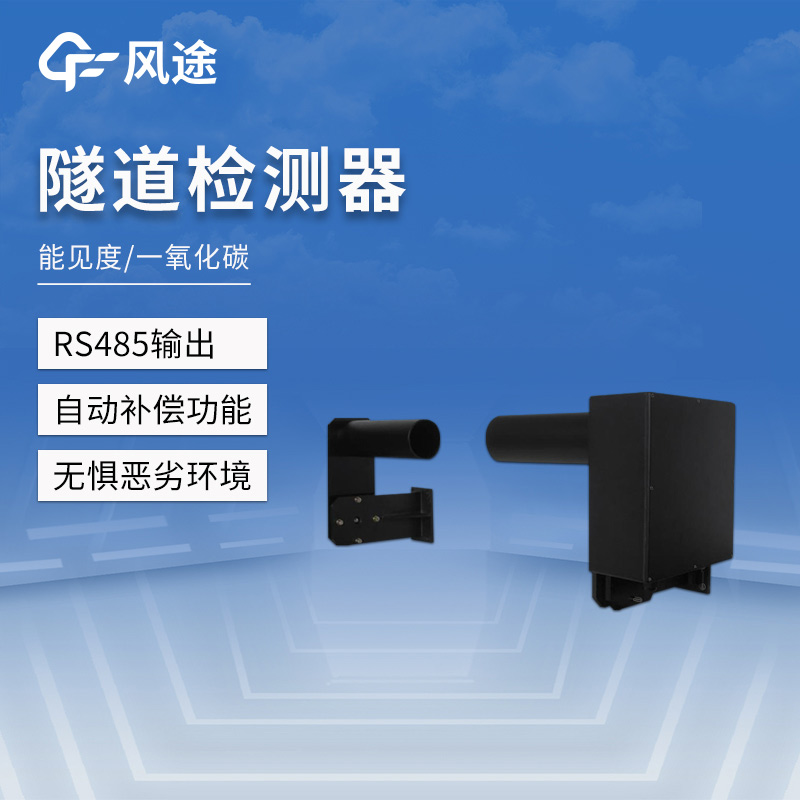Shandong Fengtu IOT Technology Co., Ltd
Sales Manager:Ms. Emily Wang
Cel,Whatsapp,Wechat:+86 15898932201
Email:info@fengtutec.com
Add:No. 155 Optoelectronic Industry Accelerator, Gaoxin District, Weifang, Shandong, China

Sales Manager:Ms. Emily Wang
Cel,Whatsapp,Wechat:+86 15898932201
Email:info@fengtutec.com
Add:No. 155 Optoelectronic Industry Accelerator, Gaoxin District, Weifang, Shandong, China
time:2025-05-06 09:05:05 source:Weather Station viewed:199 time
As an important part of the modern transportation network, the internal environment of a tunnel is closely related to visibility. Tunnels are relatively enclosed, with insufficient natural light. Pollutants such as vehicle exhaust and dust are likely to accumulate, creating an environment with high concentrations of smoke and dust, which leads to a decrease in visibility. When visibility is reduced, the driver's visual range is limited, making it difficult to detect vehicles, obstacles, and road signs ahead in a timely manner. This can easily lead to traffic accidents such as rear-end collisions and crashes, seriously threatening traffic safety and road traffic flow. Therefore, real-time monitoring of tunnel visibility is of great significance for ensuring traffic safety in tunnels.
The Tunnel visibility detector is mainly used to monitor and evaluate the visibility conditions inside the tunnel to ensure the safety of vehicles and pedestrians when driving in the tunnel. Its working principle is mainly based on optical measurement, and the transmission method is one of the commonly used measurement methods. The transmitting end of the detector emits a beam of light with a specific wavelength, such as laser or infrared light, etc. The receiving end receives the light after it passes through the tunnel air, and calculates the visibility by measuring the degree of light attenuation. For example, the COVI tunnel visibility detector adopts the transmission principle, with a built-in light-emitting diode as the light source, and a photodiode is installed at the other end as the receiver. When there are occlusions such as smoke and dust in the tunnel, the light received by the receiver is weakened, and the visibility value can be calculated according to the degree of change in light intensity.
The tunnel visibility detector is generally composed of a transmitter, a receiver, a signal processing unit, a data transmission module, etc. The transmitter and the receiver are installed oppositely in the tunnel. The transmitter emits a light beam, and the receiver receives the light beam and converts it into an electrical signal. The signal processing unit processes and analyzes the electrical signal, calculates the visibility value, and transmits the data to the control center or monitoring platform through the data transmission module.

In today's era of pursuing health and ecology, more and more scenic spots have introduced Negative Oxygen Ion Monitoring Stations, equipped with smart large screens. This initiative not only adds technological elements to the scenic spots but also is closely related to tourists' health and e...
Precipitation is a key component of the hydrological cycle. Accurate and timely rainfall data has irreplaceable value for water resource management, flood disaster warning, agricultural irrigation, and climate research. Traditional manual rainfall measurement methods have limitations in timeliness,...
Park weather station monitors elements such as temperature, humidity, and wind speed, serving the ecological management, visitor safety, and scientific research of scenic areas....
Both the piezoelectric rain gauge and the Stainless Steel Tipping Bucket Rain Gauge are commonly used tools for measuring rainfall data. So, which of these two products is better? How should consumers choose between them? Next, the editor will provide a detailed comparison of the differences between...